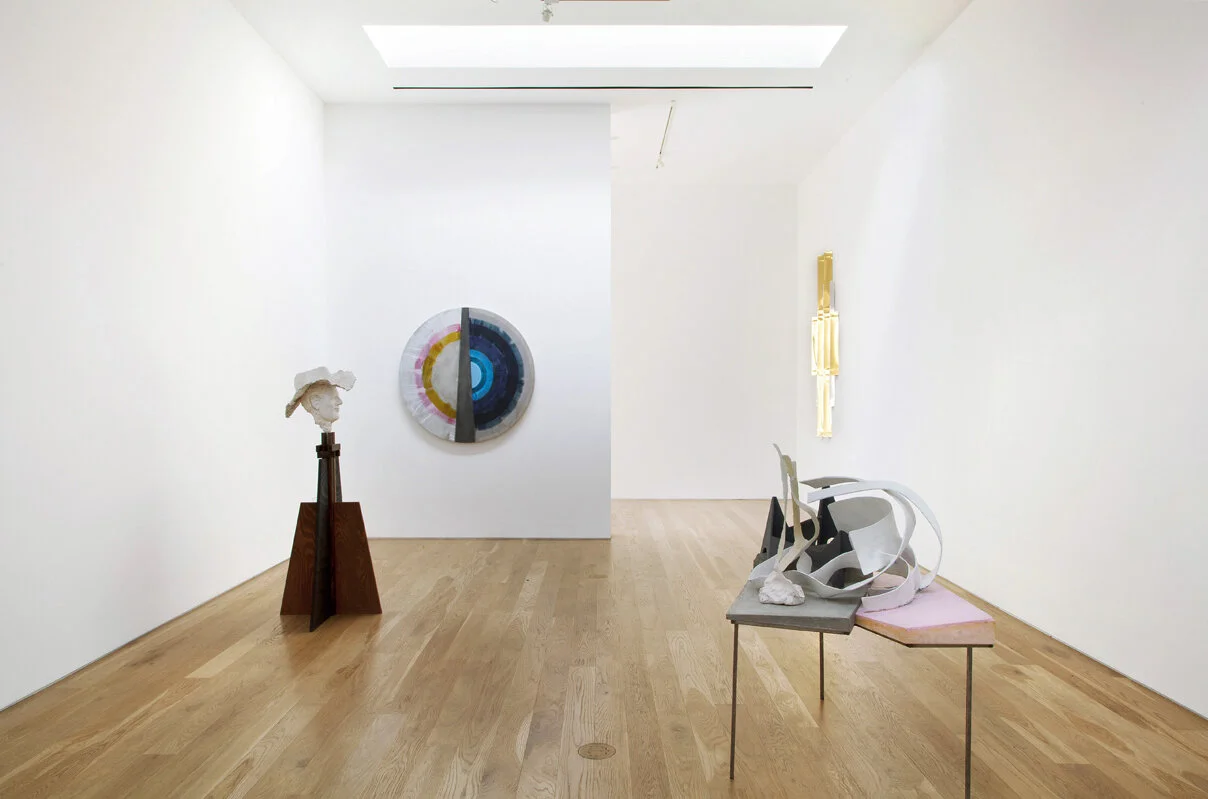Alice Könitz, Pamela Jorden, Jeff Ono
APRIL 13 - MAY 25, 2013
Presented as Samuel Freeman Gallery on La Cienega Blvd, Los Angeles.











Alice Könitz, Pamela Jorden, Jeff Ono
April 13 - May 25, 2013
ALICE KÖNITZ
The work of Alice Könitz explores the peculiarities in the formal language of generic objects, public spaces, and corporate or domestic architecture. Könitz creates idiosyncratic narratives by ‘taking one thing for another, pretending, claiming space, extracting something from its context, and inverting the public and the private’. Könitz employs an intimately handmade aesthetic, often using inexpensive and easy-to-manipulate materials that seem to stand in for something other than what they are. She often pulls from a body of internalized knowledge of public forms that she reorganizes in her work. For this exhibition, Könitz’s fascination with optical rhythms, reflective surfaces, and public sculptural oddities comes together with sculptures of varying scales that were inspired by exterior park-like elements and are now oddly domesticized indoors.
PAMELA JORDEN
Pamela Jorden’s energetic, fractured paintings combine diverse forms, patterns, and colors taken from daily experience and conveyed through an idiosyncratic engagement with abstraction. In recent work, she has reexamined, explored and referenced the color theory and visual vocabularies of early 20th century abstraction, in particular the orphic cubism of Robert Delaunay, Sonia Delaunay-Terk, and František Kupka. Jorden’s new works begin with geometrically structured canvases of stained raw linen, and employ hot and vibrant colors; frenetic, contrasting brushstrokes; and alternating matte to iridescent finishes to a particularly personal effect — simultaneously structural and atmospherically charged. Combining the visual density of her surroundings with these subtle optical effects, Jorden’s work suggests the changing effects of light and shifting perspectives, and the transience of visual experience.
JEFF ONO
Through Jeff Ono’s hybrid sculptures of organic forms and rigid geometric structure, he explores and contradicts the hubris of the early to mid-century modernist imaginary. His sculptures are constructed from simple, traditional, and industrial materials ranging from paper, cloth, gesso, encaustics and clay to steel and poured concrete, and are displayed in conjunction with low-to-the-ground, handmade stands – a decidedly intimate quality he favors to challenge the typically hierarchical nature and scale of domestic furnishings, the traditional plinth, or the monumental modernist gesture in general. Using fabrics and paper to create abstract, handmade sculptural elements and deliberately working the surfaces, Ono imparts on the materials a transformational effect, both static and malleable, frozen and in movement. His work eschews any pop or easily recognizable imagery, and is instead based on vague recollections of specific and imagined sites – some of an almost ridiculously utopian vision – including the Triforium in downtown Los Angeles, the Palazzo della Civilta Italiana (Square Collisseum) in Rome, Brutalist architectural and public spaces, or the watered-down thematic versions of modernism seen in strip malls and bank buildings in any American city.

